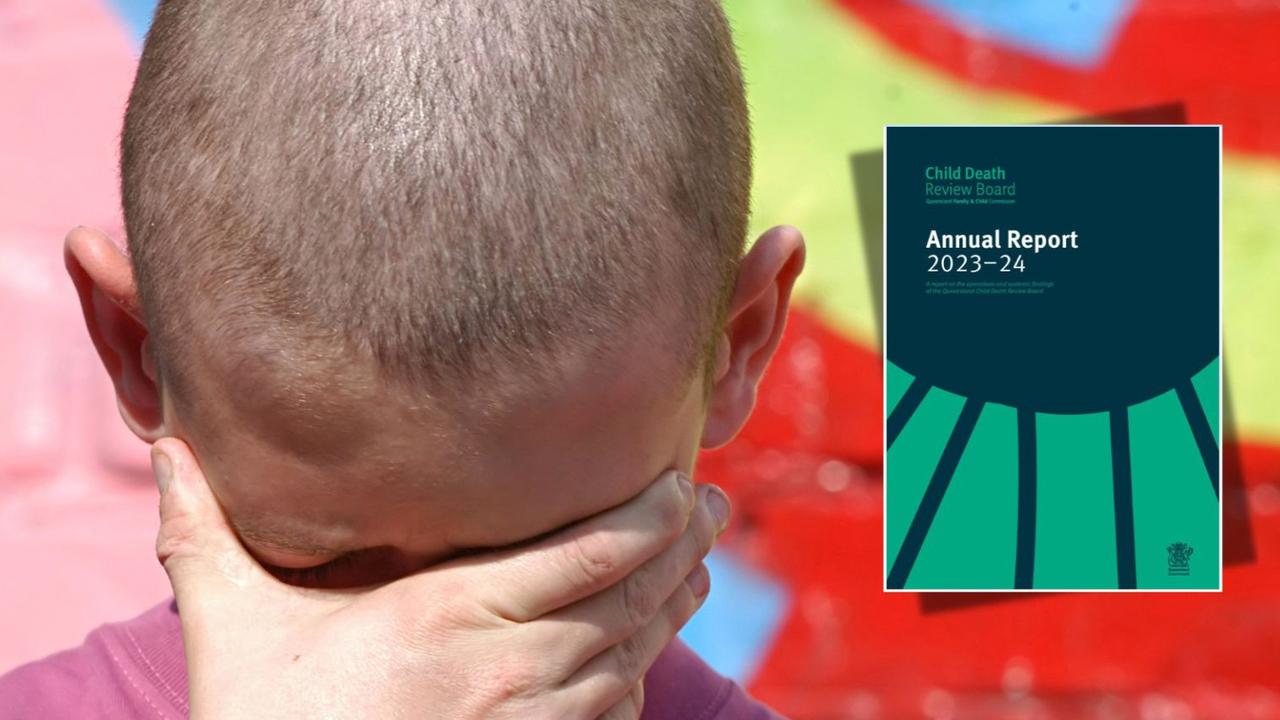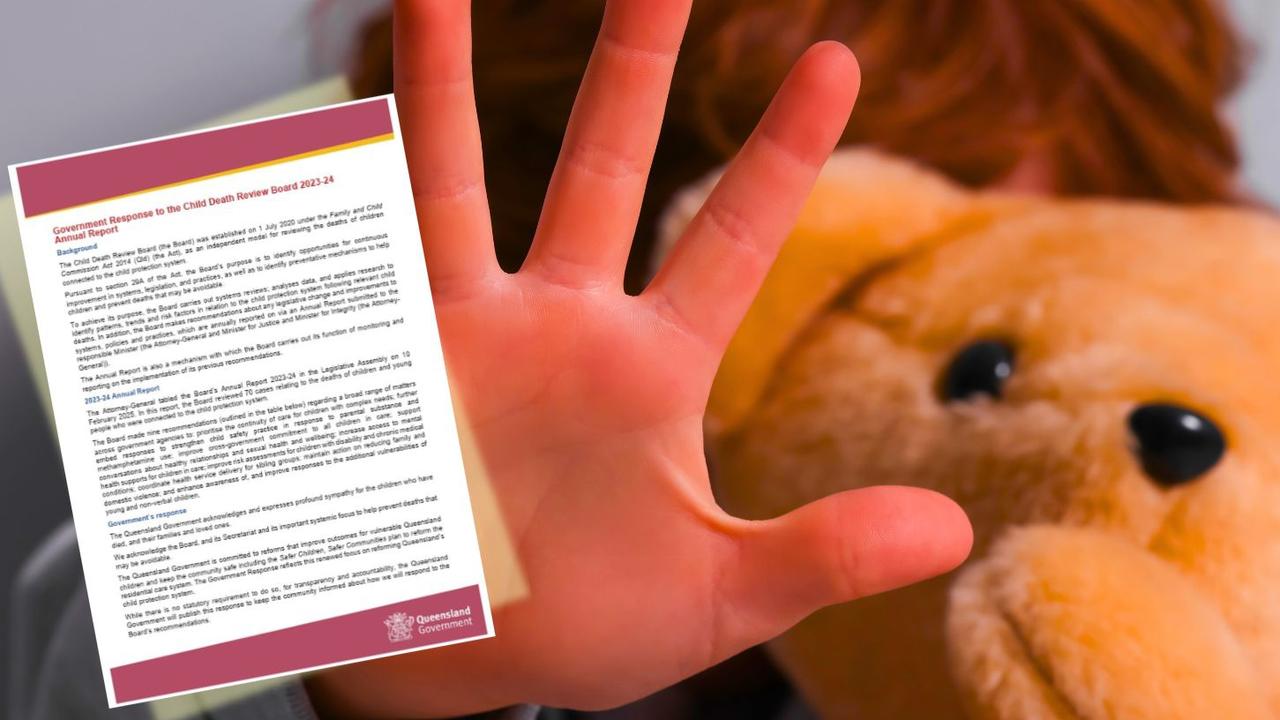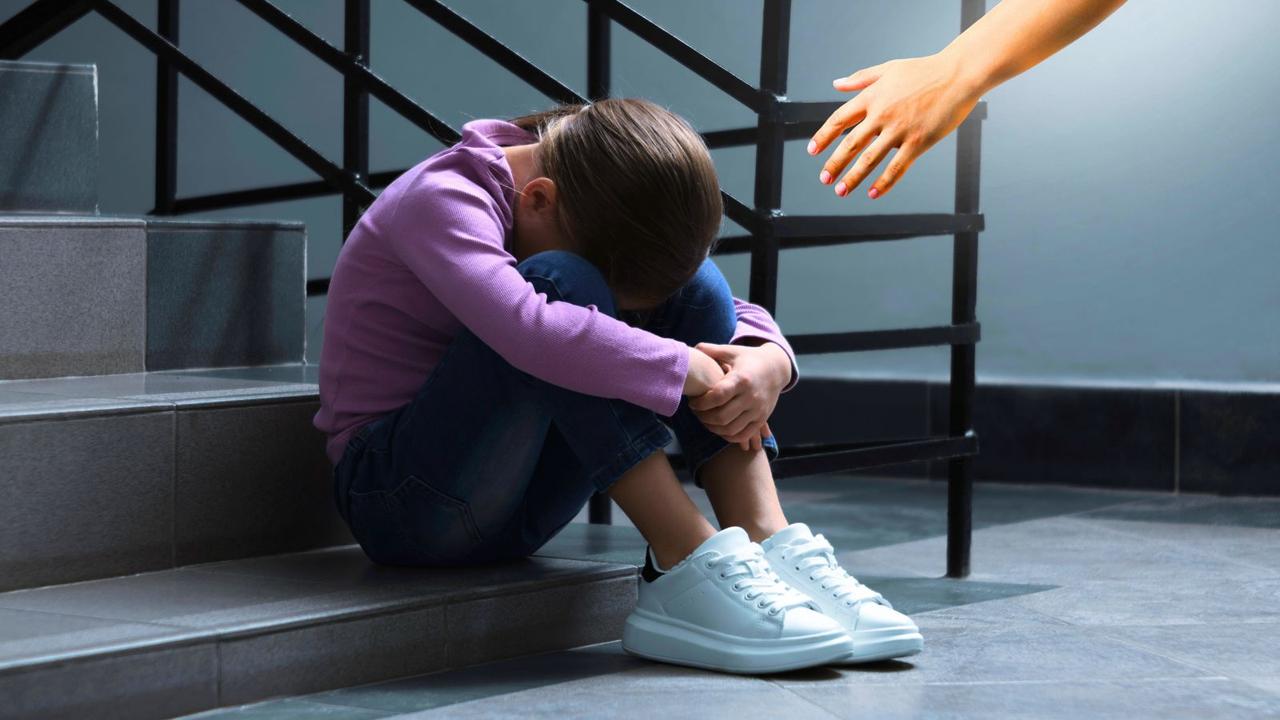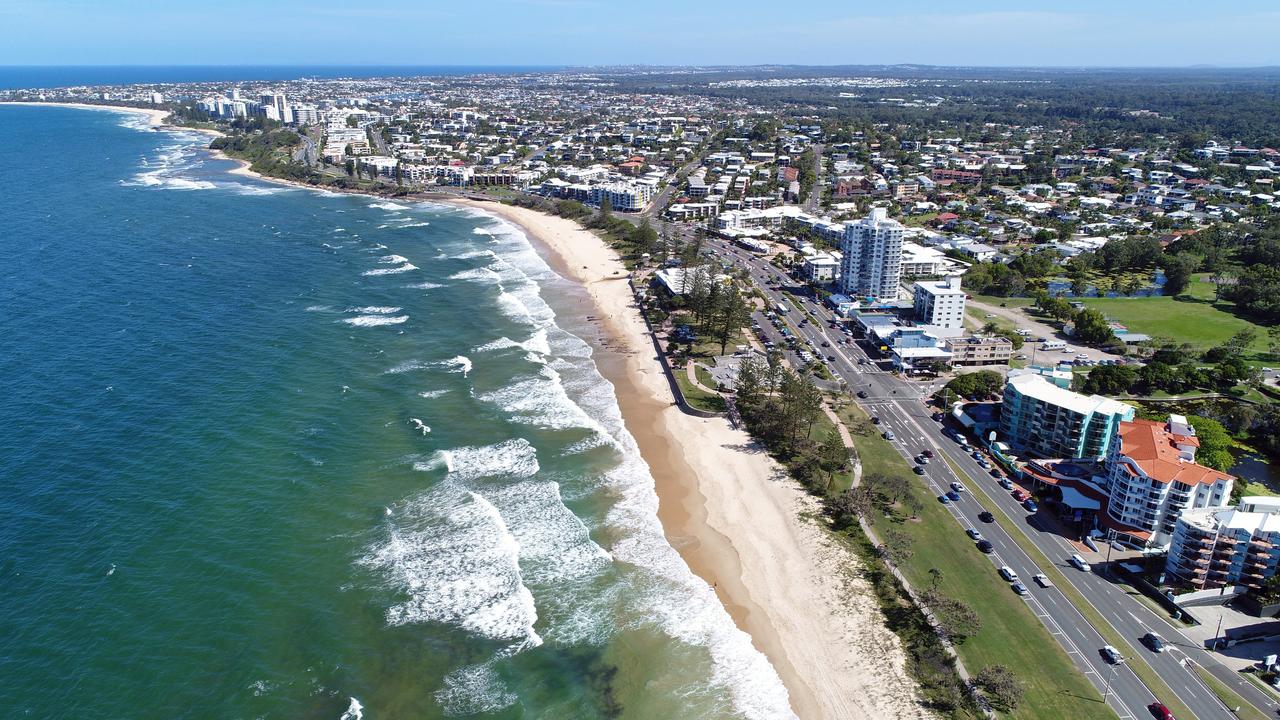Qld dead children spark state response to avoidable tragedies
A response to the Child Death Review Board’s report acknowledges systemic failures.

Sunshine Coast
Don't miss out on the headlines from Sunshine Coast. Followed categories will be added to My News.
The Queensland government has issued a formal response to the Child Death Review Board’s most recent report, admitting that “many of these deaths may have been avoidable”.
The state response, tabled quietly in parliament, acknowledges serious systemic failures across agencies tasked with protecting vulnerable children.
The long-awaited response comes months after the independent Review Board’s 2023–24 Annual Report exposed deeply troubling cases of neglect, violence, and missed intervention opportunities.
While the government pledged to support all nine of the Board’s recommendations, it stopped short of mandating some key reforms.
In its response, the government committed to overhauling procedures across police, health, education, and child protection departments.
It promised to strengthen inter-agency collaboration, improve mental health services, and develop new care models for children with complex needs.
However, the government did not commit to mandatory training for recognising non-accidental injuries in babies or expanding the use of specialist child interview teams.
The state response referenced clinical tools such as the Ten-4-FACESp bruising protocol and the ICARE (Interviewing Children and Recording Evidence) method, but did not mandate their widespread implementation.

“The government expresses its profound sympathy for the children who have died, and their families and loved ones,” the response said.
“Many of these deaths may have been avoidable.
“Supporting the needs of children and young people in care is not the single responsibility of any one government agency.”
The government’s statement is a direct response to the Child Death Review Board’s 2023–24 Annual Report, tabled in February, which reviewed 70 child deaths in Queensland.
Of those, 41 were attributed to preventable external causes including suicide, non-intentional injuries, drowning, fatal assault, transport accidents, and neglect.
The Board’s report, released publicly in October, painted a harrowing picture of systemic breakdowns.
It detailed cases of non-verbal toddlers whose injuries were mistaken for accidents, infants who drowned after being left alone in bathtubs, and children left in violent homes that authorities were aware of but failed to act upon.

Among the most distressing cases was that of a child referred to as Alex, who was banned from residential care facilities and forced to live in a tent.
Alex endured homelessness, substance abuse, and sexual exploitation by adult men.
Despite expressing suicidal thoughts and seeking help, Alex remained without stable housing for more than six months before dying.
Another case involved a 16-year-old with complex disabilities whose death followed prolonged delays in co-ordinated support from disability, health, and child protection services, risks the report said were never adequately addressed.
The government’s response marks one of the state’s most significant reckonings on child protection in years, not only because of the scale of failure but because of the human cost documented in the Review Board’s devastating findings.
More Coverage
Originally published as Qld dead children spark state response to avoidable tragedies









